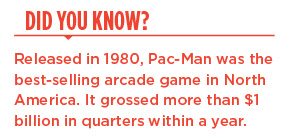Business and management advisers give their top four tips to help small- to medium-sized seed companies advance.
Do you ever feel like you’re in a maze and racing to advance to the next level or to achieve that next goal? Some might describe operating in today’s competitive seed industry like playing a game of Pac-Man. You must constantly be moving and searching for that next innovation that’s going to put you ahead. You must be ready to pivot at a moment’s notice and change strategies. You must think fast. And you must stay away from the enemies.
In the past year and half, companies at the top of the supply chain have witnessed some of the most competitive advances, threatening to change the face of the seed industry as we know it.
In December 2015, Dow Chemical Company and DuPont announced that the two companies would merge. In February 2016, Syngenta agreed to be acquired by China National Chemical Corporation for $43 billion — the most ambitious foreign takeover attempt by a Chinese company to date. In September, Bayer and Monsanto announced a $66 billion deal in which the German-based Bayer would buyout Monsanto.
These mergers and acquisitions aren’t just happening among companies at the top. They’re happening throughout the industry. In fact, as recent as Nov. 21, The Climate Corporation, a subsidiary of Monsanto, announced the acquisition of Vital Fields — a European farm management software company. In the past year, Chromatin acquired Kirkland Seed, a forage sorghum seed supplier in Vega, Texas; DLF Seeds acquired Florimond Desprez, a plant breeding and commercial alfalfa seed business in France; and Land O’Lakes signed a definitive merger agreement with Ceres. Those are just a few of the many announcements from 2016.
Couple that with the agricultural economy, which is expected to see continued low commodity prices into 2017 with farmers operating at or below breakeven. And seed companies are beginning to feel the pain too as farmers search for more ways to reduce input costs. As farmers profit margins have shrunk, so are seed companies’ and they feel the need to move, to do something more to power ahead and make it to the next round.
“When the market slows, companies search for economic efficiency as an alternative to growth,” says Steve Koep, partner and agribusiness practice lead for Clutch+ Performance, a business consulting and training firm in Minneapolis, Minn. “One of the ways to achieve growth in a slow market is to buy a competitor.”
If you don’t want to be on the receiving end of one of these mergers or acquisitions, experts recommending honing in on four management tips and strategies to help you better compete and power ahead.
Tip #1: Know Your Customer
Small businesses need to focus on niche markets and go deep early and fast, says Pam Moore, CEO and founder of Marketing Nutz, explaining that you can always expand later.
She advises businesses to select one to two markets that can be attacked and to seriously go after them. “While the big guys are figuring out who is on first, you can already have made a quick and early home run,” she says. “Whenever we kickoff a new client engagement and their answer to the question, ‘who is your target customer?’ is ‘everyone,’ we know we have some training to do.
“Sorry, but ‘everyone’ is not your target audience. You must focus … know your audience. Know what keeps them up at night. What problems do they have that you can help with? How can you add value to their business? How are you going to help them in a way that the big guys can’t? These are the questions you must ask and fast. You cannot possibly answer these questions for ‘everyone.'”
Alan Hall, founder of Grow America, an organization dedicated to helping business builders nationwide and worldwide, agrees. “Knowing and understanding targeted customers is the overarching rule of exceptional companies,” he says. “Award-winning business builders know their customers as well as they know their own families, perhaps even more so.”

Tip #2: Be Ready to Pivot
Pivoting is the art of recognizing that the pursuit of a specific idea, direction or product — in which you’ve invested significant time, money and energy — is no longer the correct path to follow.
Moore says it’s important to leverage your small size to start and stay agile.
“Small businesses don’t have the red tape of big business,” she explains. “If they see they are headed in the wrong direction they can make a quick pivot without negative impact much more quickly than a large brand can do.”
Moore encourages companies to tap into the benefits of agility in the areas of innovation, market research, marketing execution and leverage of new and social media, for starters.
“Let agility be the turbo fuel that enables you to make quick yet well thought out decisions,” she says. “Develop processes that reward quick decision-making. Don’t be afraid to take risk. Learn to fail fast and learn from each success and failure along the way.”
Tip #3, Differentiate
Troy Schroeder, a consultant who also does work for Clutch+ Performance, says differentiation might sound like a pipe dream in markets where product moves in railcars and is sold by the ton or bushel. But, he says, when the products are virtually the same, you need to shift your focus from selling products to connecting with the customer and their needs.
“At the risk of tossing stones at our own industry, agribusiness has traditionally been guilty of digging deeply into the upstream side of the equation and spending less time connecting the dots of how these things matter to and add value for the customer,” Schroeder says. “Sustainable success in today’s market is all about the customer experience, and focusing every function of the organization toward customer-first thinking is an effective way to rally your business. Schroeder provides a few customer-focused areas of your business that may be the key to differentiation:
• Better customer service.
• Better delivery and more knowledgeable distribution partners.
• Leveraging the overall customer relationship by bundling with other products and services for added value.
• True customer segmentation. And, corresponding communications and sales approaches to more closely tailor to each segments’ unique needs.
• Make the application and ease-of-use of the product better than anyone else.
He recommends answering a series of questions before trying to establish a differentiator. Is the differentiator in your offering something your customers care about? What can you do better than your competitors? Can you consistently deliver on your differentiator? Is your differentiator sustainable over the long haul?
Tip #4: Use Analytics
Leveraging big data can help by providing a solid structure for collecting and analyzing information to form a crystal clear view of an organization, according to The Ohio State University. Businesses that can transform complex data sets into actionable information can make effective business decisions.
Jim Thrift, an agricultural consultant, adds that data management will drive the future ag segment. “A smart person with the most information wins,” he says.
A recent Gartner survey reveals that 73 percent of companies have invested, or plan to invest in big data during the next two years — a number that has risen from 64 percent in 2013. Big data investment is increasing at an average annual rate of almost 30 percent.
A strategy should be consistently analyzed to see if it is working, shares Africa Ariño, professor of strategic management at IESE Business School and director of its Research Center on Globalization and Strategy. “Collect relevant data from both within the industry and the macro-environment and analyze it frequently to see if the company¬¥s strategy holds up or tweaks need to be made,” Ariño says.
Hidden Opportunities
Hard times present opportunities. Myron Stine, president of Stine Seed Co., says that consolidation opens up the market.
Richard Brock, president of Brock Associates, believes 2017 will be a turnaround year for agriculture. “Consolidation occurs both on the agribusiness side and on the farming side at the bottom of every cycle,” he says. “This one is no different. Some interpret consolidation as negative. Maybe. But there is a bright side.”
Brock says that farm operators will be consolidating and expanding in size just like agribusiness firms. “Producers will be more professional in management decision-making and require higher levels of services from suppliers,” he says.
To power ahead and get their business, you’ll need to move fast and demonstrate that your products and services will help your current and potential farm customers succeed.












